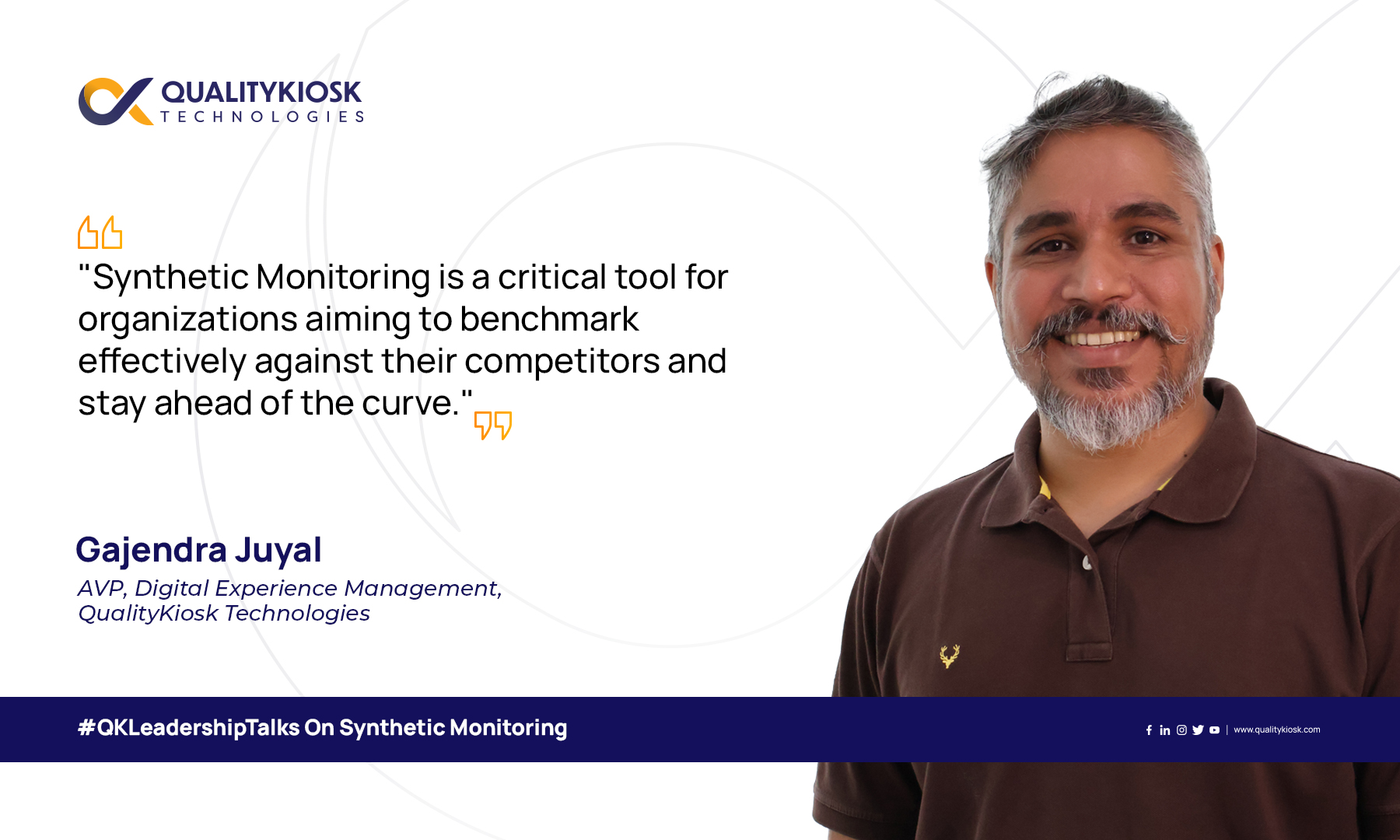Navigating Modern Digital Ecosystems: How Synthetic Monitoring Tools Unveil Real User Impacts
In today’s ever-evolving digital landscape, organizations face the challenge of meeting heightened customer expectations while adapting to the intricacies of modern digital ecosystems. As monolithic applications give way to agile microservices architectures, the need for faster time-to-market introduces a paradoxical demand for comprehensive synthetic testing. Microservices, the building blocks of this evolution, operate like interconnected gears, but their intricate interactions can lead to unforeseen disruptions.
The Monolith-Microservice Conundrum: Navigating Complexity
In the digital realm, it’s common to witness a banking application that combines the agility of microservices with the stability of monolithic architecture. A customer’s simple action, such as initiating a fund transfer, sets off a series of interactions across various microservices – transaction processing, account verification, security checks, and more. This intricate dance is seamless when everything works as intended, but a single component faltering can have far-reaching front-end impacts.
As the development pace quickens, testing must become more meticulous. Microservices, when operating within a macro-services environment, demand rigorous testing, not detecting significant glitches, often caught during testing, but in anticipating unpredictable boundary scenarios that may impair the user experience. These scenarios, elusive in testing, risk undermining the seamless user experience organizations aspire to offer.
Imagine a customer trying to access their account balance through a mobile banking app. Beneath this seemingly straightforward task lies a labyrinth of microservices interacting to fetch, verify, and display the data. Let’s say a minor update in the ‘transaction processing’ microservice inadvertently slows down response times for 5-10% of users, resulting in frustrating delays in retrieving their balance. Identifying the root cause – in this case, the ‘transaction processing’ microservice – can be like finding a needle in a digital haystack.
This localized user impact can significantly affect the overall user experience and brand image. Even if the majority of users are unaffected, negative experiences of a small number can amplify through social media. A single negative tweet or post can go viral and damage the reputation of the bank. Hence the need for synthetic transaction and user journey monitoring.
The Power of Synthetic Monitoring: Translating User Experience into Insights
Synthetic Monitoring, a part of Digital Experience Monitoring (DEM), replicates user interactions with the application, mimicking real-world scenarios. By doing so it focuses on the actual end-user experience across various touchpoints. When the ‘transaction processing’ microservice undergoes an update, synthetic monitoring detects the slowdown and highlights its ripple effect on the user experience.
Translating Data into Actionable Insights
Synthetic monitoring goes beyond uncovering the issues; it vividly illustrates how slowdowns impact users, from frustration with a sluggish app to potential transaction abandonment, and implications for customer satisfaction. Armed with this granular insight, organizations can swiftly pinpoint the problematic microservices, analyze their impact, and prioritize rectification efforts.
Unleashing the True Potential: The Synergy Between Synthetic Monitoring and APM Tools
In the realm of optimizing digital experiences, a common question arises: “Why invest in Synthetic Monitoring when we already possess top-notch APM tools?” The answer lies in recognizing the unique strengths of each. APM tools are powerful for unearthing root causes of incidents but can create an avalanche of alerts, overwhelming operations teams and potentially letting user-impacting incidents slip through. While they provide essential insights, APM tools may lack the crystal-clear, user journey-wise picture crucial for precise decision-making.
Imagine having an APM Solution that diligently reports many issues. Your team decides to tackle the most frequently recurring top 3 or 4 issues, striving to fix them with dedication. However, what if these issues, while important, don’t significantly impact the actual user experience? Your tremendous effort may result in a user experience that falls short of excellence. Now, envision a scenario where Synthetic Monitoring solutions enter the stage, dynamically monitoring mission-critical journeys and generating failure insights at the journey level, directly affecting the user experience. This is where a combination of Synthetic Monitoring and APM shines. By seamlessly integrating these two, you get the best of both worlds.
Elevating the User Experience: The Harmonious Dance of SM and APM
Synthetic Monitoring, acting as the sentinel of user-centricity, identifies top user-impacted issues, ensuring focus aligns with improving the digital journey. When Synthetic Monitoring joins forces with APM, the result is a potent combination. This symbiotic relationship ensures that the causes of issues highlighted by Synthetic Monitoring, are precisely pinpointed within the comprehensive context provided by APM tools. This synergy eliminates guesswork, allowing teams to direct their efforts towards resolving issues with a tangible impact on the end-user experience.
Empowerment Through Precision: Elevate Your Digital Experience
The integration of Synthetic Monitoring and APM creates a harmonious ecosystem focused on genuinely enhancing the digital experience, not just resolving incidents. This collaboration empowers teams to identify, prioritize, and resolve issues that directly impact users, transforming a subpar experience into one that delights customers. Through this strategic integration, you don’t just optimize your digital journey – you elevate it, ensuring every interaction with your application is a step towards user satisfaction, loyalty, and a competitive edge.
QualityKiosk’s Synthetic Monitoring Service ensures digital applications are available and perform as expected. Synthetic monitors test the service’s availability and performance metrics like page load time, and response time. It also identifies performance issues before they impact real users by testing different scenarios and conditions such as device types, geographic locations, and network conditions. This ensures an improved user experience, leading to increased customer satisfaction and loyalty.
Enhancing Website and Mobile App Response Times for Unparalleled Performance
QualityKiosk employs a dedicated performance engineering team trained to analyze HTTP requests and responses made during webpage or mobile app loading. This data identifies performance bottlenecks and makes recommendations for improvement. Identifying slow-loading resources is crucial, and HTTP Archive (HAR) analysis helps identify these resources, which can be images, scripts, or CSS files. Reducing the number of HTTP requests and optimizing code are essential steps to improving performance. Additionally, optimizing the network connection and image optimization further enhance application performance. Region-wise Performance Analytics is another vital aspect. If a webpage does not load correctly for users in a particular region, HAR analysis identifies and highlights problems. This information helps development teams make changes and further optimize, resulting in a better user experience for users in that region.
Competition Benchmarking on KPIs
Benchmarking against competitors is critical for organizations aiming to stay ahead of the competition. Comparing your performance to rivals allows you to identify areas needing improvement and set goals for a competitive advantage. Benefits of QualityKiosk’s Competition Benchmarking Reports include identifying areas for improvement, setting realistic goals, improving decision-making, and motivating your team. Benchmarking against competitors provides valuable insights and helps allocate resources to areas with the most significant impact on performance. KPIs that we Benchmark with the competition include:
- Journey-wise availability
- Journey-wise feature comparison
- Journey- and Page-wise Response time comparison
- Overall Customer sentiment comparison based on Play/App Store reviews
- Transaction Success Rate during the monitoring period
Steering Towards a Superior Digital Experience
Synthetic Monitoring serves as a lighthouse guiding organizations through the turbulent sea of digital complexity. It empowers organizations to:
- Detect anomalies early in intricate microservice interactions
- Understand front-end impacts and their implications on user behavior
- Identify areas needing urgent attention to safeguard user satisfaction
In a landscape where user experience reigns supreme, synthetic monitoring bridges intricate digital architecture and user satisfaction. It transforms complicated interactions into tangible insights, steering organizations towards a future where every digital interaction is seamless, and every user’s journey is smooth.
About the Author
Gajendra Juyal, Assistant Vice President of Digital Experience Management at QualityKiosk Technologies, is a Synthetic Monitoring expert with over 15 years of industry experience. He has a proven track record in designing, implementing, and managing synthetic monitoring solutions, having served 100+ clients. An accomplished leader, Gajendra has assembled and overseen a team of over 150 professionals responsible for 24/7 website and mobile application monitoring. In his current role, he focuses on developing DEM solutions to enhance user experience, boost customer satisfaction, and reduce costs. His passion for using technology to solve real-world problems drives his quest for innovative DEM improvements.





